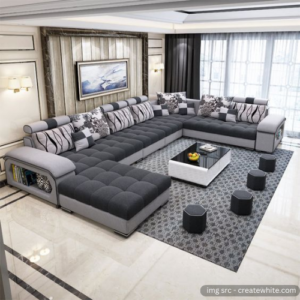Furniture is more than just functional objects in our living spaces; it is a form of art that can enhance the aesthetics of a room while serving a practical purpose. The art of furniture design lies in finding the delicate balance between aesthetics and functionality. In this blog post, we will delve into the principles and techniques that go into creating furniture that is both visually appealing and highly functional. Whether you’re a designer or a furniture enthusiast, these insights will help you appreciate the artistry behind furniture design.
-
Understanding the User and Purpose:
Successful furniture design begins with a deep understanding of the user and the intended purpose of the piece. Consider the needs, preferences, and lifestyle of the user to create furniture that meets their requirements. Whether it’s a comfortable chair, a functional desk, or a stylish coffee table, the design should align with the intended use.
-
Embracing Form and Proportion:
Aesthetics play a crucial role in furniture design, and finding the right balance of form and proportion is essential. Furniture should be visually appealing, with pleasing proportions and well-defined shapes. The form should complement the intended function and create a sense of harmony within the overall design scheme.
-
Material Selection and Craftsmanship:
The choice of materials greatly influences both the aesthetic appeal and functionality of furniture. Select materials that not only align with the desired design style but also offer durability and practicality. Pay attention to the craftsmanship and quality of construction, ensuring that the piece is built to withstand regular use.
-
Ergonomics and Comfort:
Functionality goes hand in hand with comfort in furniture design. Consider ergonomics to create furniture that supports the body’s natural posture and movements. Whether it’s the height of a chair, the depth of a sofa, or the placement of armrests, every detail should be carefully considered to enhance the user’s comfort and well-being.
-
Balancing Visual Impact and Practicality:
While aesthetics are important, furniture must also serve its practical purpose. Strive for a balance between visual impact and practicality. For example, a visually striking chair should still provide adequate seating comfort, and a stylish storage unit should offer efficient storage solutions.
-
Innovative Functionality and Adaptability:
Push the boundaries of functionality by incorporating innovative features and adaptability into furniture design. Consider multifunctional pieces that can serve multiple purposes, such as storage ottomans or modular sofas. Explore new technologies and materials that can enhance the usability and versatility of furniture.
-
Cohesiveness with the Design Space:
Furniture should not exist in isolation but rather harmonise with the surrounding space. Consider the overall interior design style, colour palette, and existing decor elements when designing furniture. The piece should seamlessly integrate into the space and contribute to the cohesive aesthetic of the room.
-
Sustainability and Environmental Considerations:
In today’s world, sustainable design is a crucial aspect of furniture creation. Consider environmentally friendly materials, manufacturing processes, and practices that reduce waste and promote sustainability. By designing furniture with longevity in mind, you contribute to a more sustainable future.
Here are some furniture design inspirations for you:












-
Conclusion:
The art of furniture design lies in finding the perfect balance between aesthetics and functionality. By understanding the user’s needs, embracing form and proportion, selecting appropriate materials, prioritising comfort and ergonomics, and considering the overall design scheme and sustainability, furniture designers can create pieces that are highly useful and aesthetically pleasing. The artistry behind furniture design continues to evolve as designers explore innovative techniques and push the boundaries of creativity. As consumers, we can appreciate and celebrate the craftsmanship and thoughtfulness that goes into every piece of furniture that enhances our living spaces.






